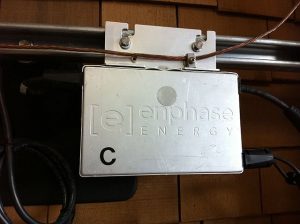by Paula Mints
In June, Suniva crawled out of its badly managed grave courtesy of a request to the U.S. Bankruptcy court made by its partner-in-tariff-petition, SQN Capital Management, which had sought relief for itself and Suniva’s other creditors. A public auction will be held sometime between June and August for, what was described as, some of Suniva’s manufacturing equipment. Meanwhile, back on planet hope-springs-eternal, investment is being sought to restart manufacturing with whatever equipment remains. Lucky SQN now owns Suniva’s monocrystalline cell manufacturing capability, its module assembly capability and its licenses.
Comment: Concerning the upcoming auction … if you’ve got a dollar and are tired of Vegas odds, go for it. Seriously though, the company’s US module assembly was already outdated (most of its modules were assembled in China and even there, focused on 60 cell modules) and its cell manufacturing uncompetitive – because – the cost structure in the US is higher than that of China (and other Asian countries). Concerning 60 cell modules, manufacturers such as LG, still offer these modules as premium products for the rooftop residential market.
Labor costs are higher – much, much higher than in Vietnam (<$3.00 per hour), China (<$6.00 per hour), Thailand (<$3.00 per hour), India (<$3.00 per hour). In the US the minimum wage is $7.25 per hour and is higher in some states.
Though other countries may have overtime laws the base pay is lower and so, again, does not compare to the US. The cost of inputs is lower in other countries. The manufacturing concern may be well-supported by local and central governments in other countries. The manufacturing concern may not pay taxes, or, may pay significantly lower taxes in other countries and land for the facility may have been free or close to free (no rent) in other countries.
And … lest we forget, there is the cost of the Trump Administration’s tariffs on, basically, everything and against, basically everyone. These tariffs have led to retaliation from, basically everyone, on basically everything. The added cost of inputs (steel, aluminum, et al) is already trickling through the US economy (and, that of, basically, economies everywhere).
Finding an investor willing to buy what is left of Suniva’s equipment after the auction, and who will then restart manufacturing of cells and/or modules, will be (and should be) difficult.
The What Ifs for SunPower of Suniva’s possible reemergence
If whatever entity buys whatever is left of Suniva restarts its cell manufacturing, a major strategic coup for SunPower (SPWR) will be reduced. As the only US cell manufacturer (if the SolarWorld US acquisition is finalized) SunPower would have the control over requesting an extension for the 2012/2014 and current 201 tariffs, and could allow them to sunset, ask for an extension, or pursue another country. If Suniva successfully restarts cell manufacturing SunPower’s control in this regard is somewhat diluted. However, a successful restarting of Suniva’s cell manufacturing is a big if with very little upside to it, is frankly hard to justify, and though it may happen, hard to imagine. Granted, the unimagined happens every day. Perhaps one of the companies that has announced plans for module assembly in the US will consider Suniva a cheap buy worth retooling.
Lesson: This is not a lesson about the struggle of a little company to survive. This is a lesson on how to read announcements for what really matters. The announcement was about an auction. More will be forthcoming after the auction.
Enphase buys SolarBridge with immediate plans to shutter a lesser rival
In June, right on the heels of its SolarWorld acquisition announcement, SunPower announced it had sold its microinverter division (SolarBridge) to microinverter manufacturer Enphase (ENPH). SolarBridge was founded in 2004 in Austin, Texas. In 2013, longtime SunPower Executive Bill Mulligan was named SolarBridge’s CEO. In 2014, SunPower acquired SolarBridge.
Enphase acquired SolarBridge for $25 million and will issue 7.5-million shares of stock. Enphase also gets a supply agreement with SunPower for its microinverter product. Enphase stated it would immediately shut down production of the SolarBridge microinverter technology.

The real competing technology for Enphase remains string inverters with power optimizers.
Lesson: This is another lesson on how to read announcements. Enphase bought a pipeline. SunPower got rid of an underperforming and expensive asset, and secured funds to help with its SolarWorld US acquisition costs. Happens all of the time. You want a new purse … sell the old one on eBay. Kudos all around.
This is also a lesson about expectations. Just like the future, expectations are ephemeral and are a product of our hopes, dreams and in some cases fears. This means that worst case, Enphase paid $25-million and issued stock to get rid of a rival technology. The success of the worst case depends on how big a rival SolarBridge really was for Enphase. If SolarBridge had negligible market traction, then the worst case scenario is pretty expensive, and if the pipeline is less robust than expected, the expense is hard to justify.
Paula Mints is founder of SPV Market Research, a classic solar market research practice focused on gathering data through primary research and providing analyses of the global solar industry. You can find her on Twitter @PaulaMints1 and read her blog here.
This article was originally published in SPV Reaserch’s monthly newsletter, the Solar Flare, and is republished with permission.






